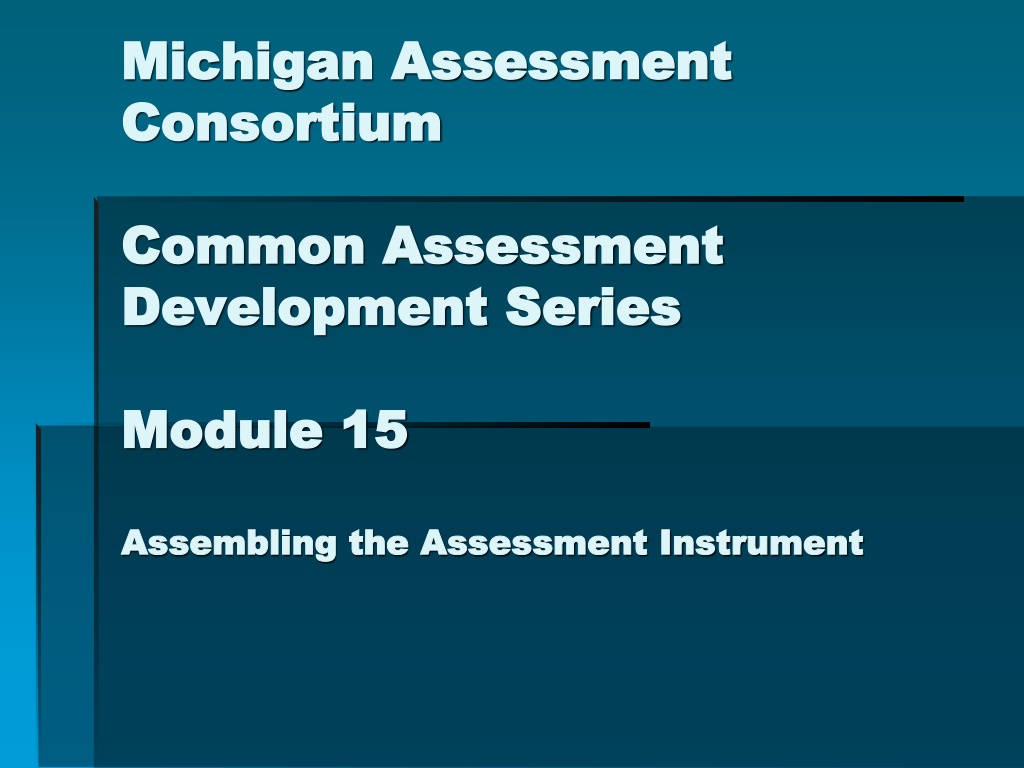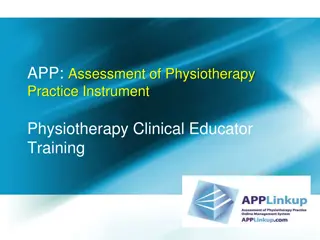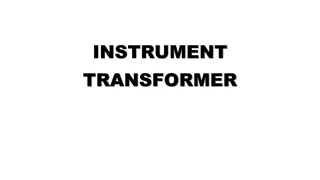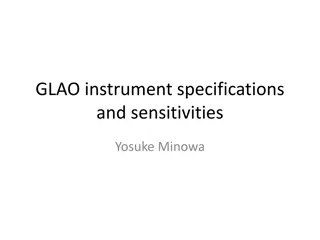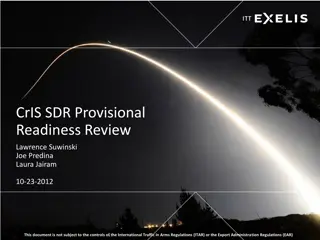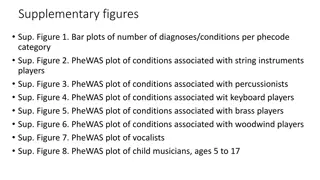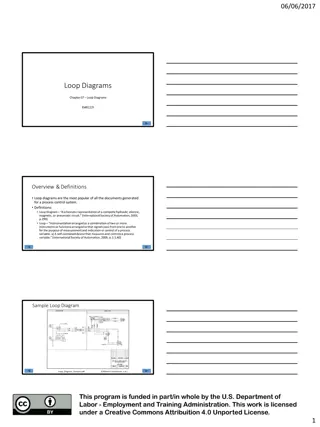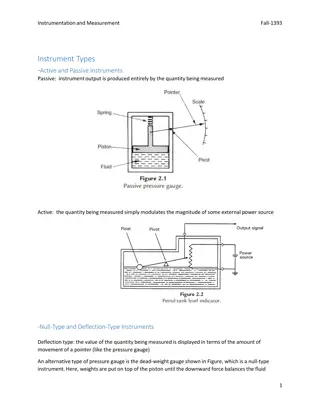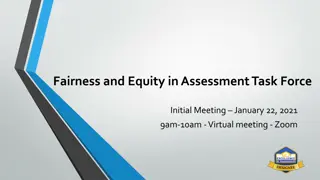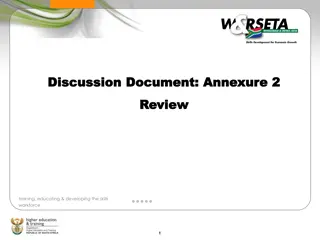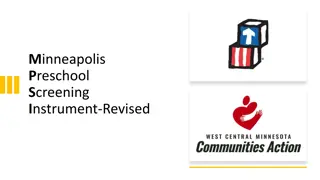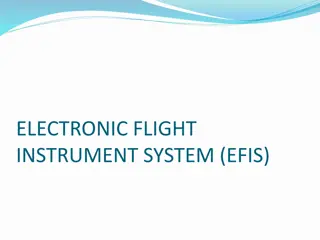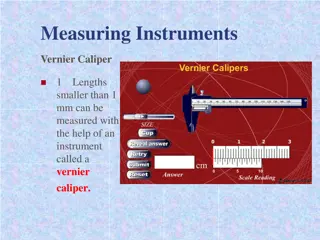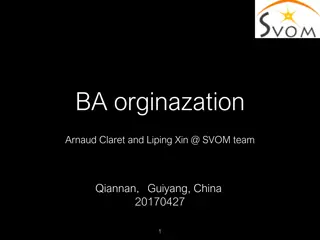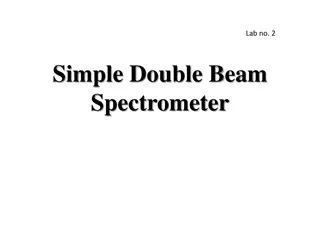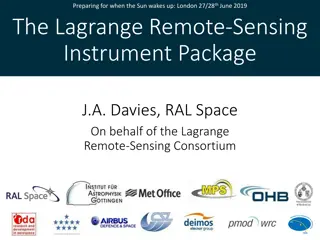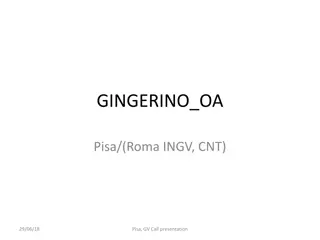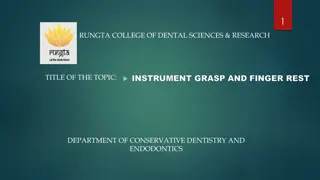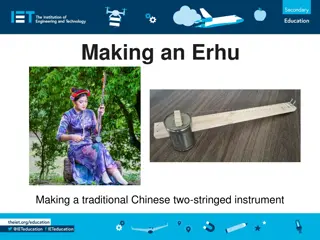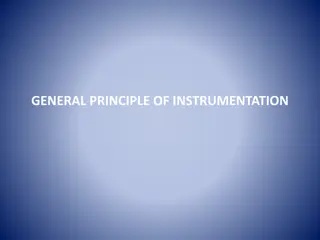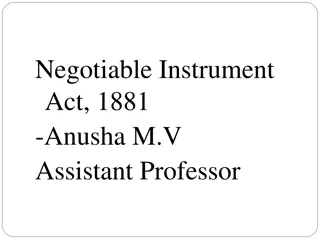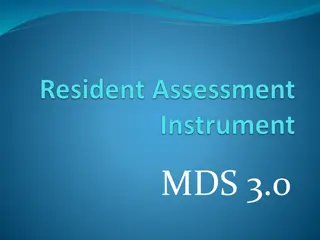Assessment Instrument Development Guidelines
Learn the essential steps for assembling an assessment instrument, from reviewing test blueprints to ensuring reliability and validity. Understand the importance of test assembly, cover page creation, and alignment with learning targets to create effective assessment booklets for students. Narrated by Jim Gullen from Oakland Schools, this module provides insights into maximizing the quality of assessment instruments.
Download Presentation

Please find below an Image/Link to download the presentation.
The content on the website is provided AS IS for your information and personal use only. It may not be sold, licensed, or shared on other websites without obtaining consent from the author. Download presentation by click this link. If you encounter any issues during the download, it is possible that the publisher has removed the file from their server.
E N D
Presentation Transcript
Michigan Assessment Michigan Assessment Consortium Consortium Common Assessment Common Assessment Development Series Development Series Module 15 Module 15 Assembling the Assessment Instrument Assembling the Assessment Instrument
Narrated By: Narrated By: Jim Gullen Oakland Schools 2
Assembling the Test Assembling the Test You have your items, it s time to assemble the test booklets. There are some important steps to assembling your test booklet(s) It is important to consider how to assemble a test so that the test is not confusing to students 3
Test Blueprint Test Blueprint Assembling the test starts with a check of the test blueprint Use the blueprint to decide which items to use in either a field test or the actual assessment instrument How many items for each target? What mix of items to use for each target? 4
Test Assembly Test Assembly To assure reliability, review How many standards were selected How many items will be used per standard More items = greater reliability, but fewer standards covered in the same amount of time 5
Test Assembly Test Assembly To assure validity, assure two-way alignment: All important learning targets are assessed Every assessment item measures a target You will need to juggle reliability and validity criteria to come up with a test that has enough items but is not too long 6
Cover Page Cover Page Each test should have a cover page This page should show the title of the test at the top If multiple test forms are used, make sure that each has a unique identifier so that students can mark this on their answer document Examples are shown on the next page 7
2008-2009 Quarter 2 Math Assessment Grade 2 Student Name:______________ Directions: Below you will find 15 questions . 8
Directions Directions Directions typically appear on the inside cover or on the top of the first page: Can students write in the test booklet? Must answers be marked on a separate answer document/scan sheet? Must students use a number 2 pencil? Can calculators, dictionaries, periodic tables, be used? Is the test timed? If so, what is the time limit? 9
Guidelines for Test Assembly Guidelines for Test Assembly Make sure that the passage and items are on the same page or facing pages. Avoid page breaks in the middle of an item If an item refers to a graphic, make sure to give directions to the student that says this 10
Guidelines for Test Assembly Guidelines for Test Assembly For multiple-choice items, make sure to list the answer choices consistently: A-D or 1-4 Four down or two-by-two Make sure that all answer choices are of the same length Make sure that there is only one correct answer 11
Guidelines for Test Assembly Guidelines for Test Assembly Present items with a consistent format: Use the same font(s) throughout Tab the answer choices consistently Space within and between items consistently Set test directions off from any item, so students see how they are to respond Use regular and bold print consistently 12
Directions: Please select the best answer for each test question 1. How many sides does a triangle have? Directions: Please select the best answer for each test question. You may use a calculator on this test. A. 2 B. 3 C. 4 D. 5 1. How many sides does a triangle have? A. 2 B. 3 C. 4 D. 5 2. How many sides does a square have? A. 2 B. 3 2. How many sides does a square have? C. 4 D. 5 A. 2 B. 3 C. 4 D. 5 You can use a calculator on this test. 3. What is the sum of 3 and 7? A. 3 B. 7 C. 10 D. 37 What is the sum of 3 and 7? 1. 3 2. 7 3. 10 4. 37 13
Summary Summary Use a clearly identifiable title Provide clear student directions Use an appropriate format Aids the reader in completing the test Doesn t add complexity Promotes readability Has enough white space, there s not too much stuff on a page. 14
Summary Summary A carefully assembled test, based on the test blueprint, laid out in an attractive manner, will add to the validity of the test. 15
Series Developers Kathy Dewsbury White, Ingham ISD Bruce Fay, Wayne RESA Jim Gullen, Oakland Schools Julie McDaniel, Oakland Schools Edward Roeber, MSU Ellen Vorenkamp, Wayne RESA Kim Young, Ionia County ISD/MDE 16
Development Support for the Assessment Series The MAC Common Assessment Development Series is funded in part by the Michigan Association of Intermediate School Administrators In cooperation with Michigan Department of Education Ingham and Ionia ISDs, Oakland Schools, and Wayne RESA Michigan State University 17
